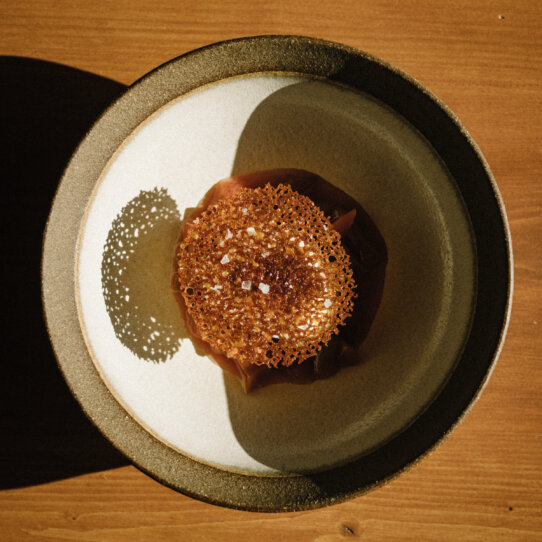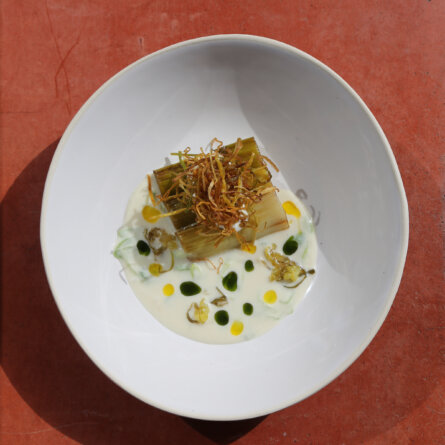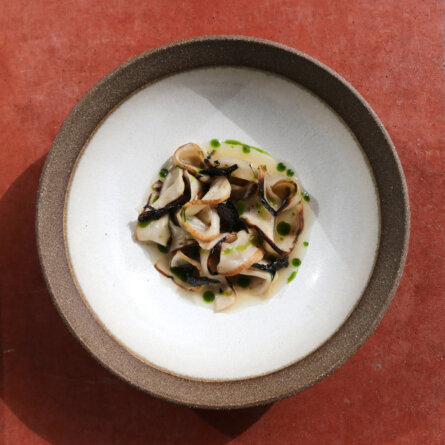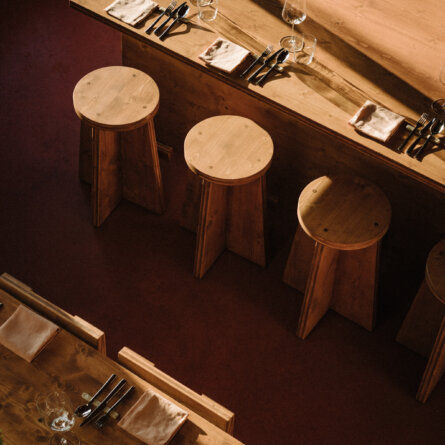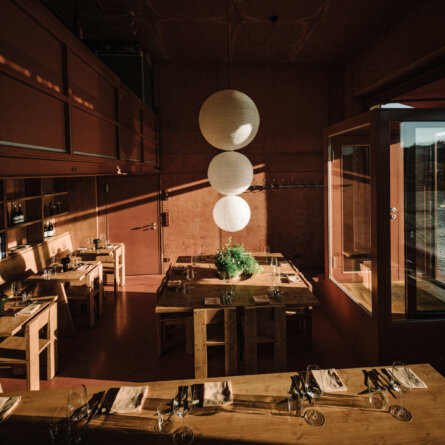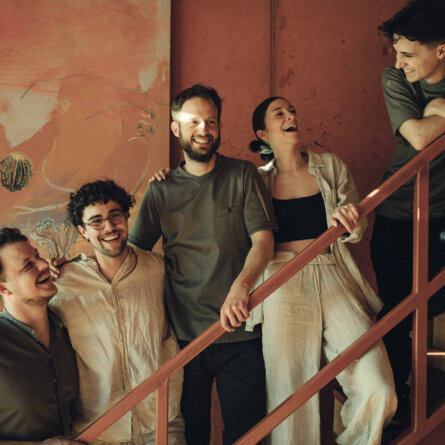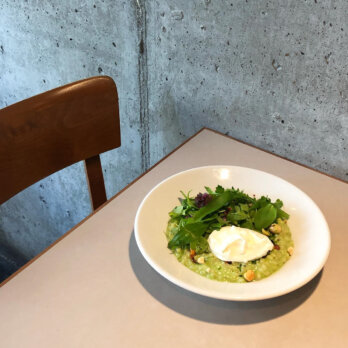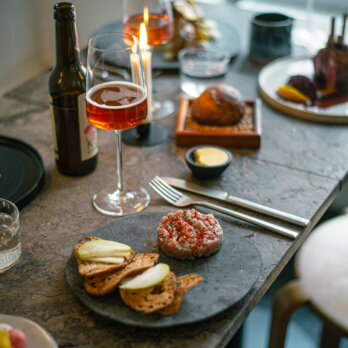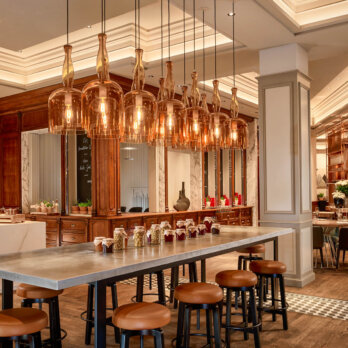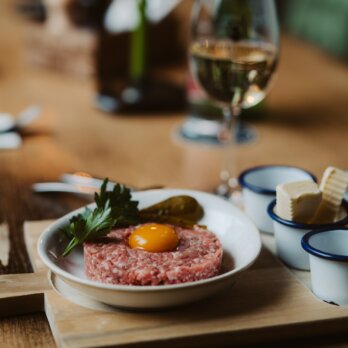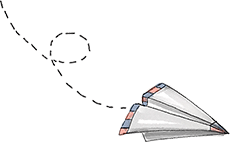Opening Times
Tuesday to Saturday 18-23 h
Address
aerde Restaurant
Am Lokdepot 6
10965 Berlin-Schöneberg
.How to get there
price level
Good to know
In addition to dinner, the Aerde Restaurant offers brunch on Sundays.Nomen est omen. The clay-coloured red of the walls in the peculiarly designed Schöneberg Lokdepot immediately makes you think of a walk through the forest. The centre of the largest table, which is almost the size of a table, is adorned with deep green, velvety moss and reinforces the impression of an excursion into the countryside. Twenty people find a place in the well-filled room; the babble of voices awakens familiar feelings.
These are reinforced by the friendly welcome with a warming cup of tea and warm towels - an extremely cosy welcome gesture. You almost forget that the Aerde restaurant has only just opened and that you haven't been coming and going here for years. In fact, the self-proclaimed Research Restaurant, which connoisseurs may already know from last year's pop-up on Kollwitzmarkt, opened in March.
The menu is still at the beginning, explains manager and chef Justus Will. Many of the garums and ferments that he and his team produce themselves simply take time, he explains: "In terms of the products that we want to put on the plates at some point, we are only at maybe 10 per cent.
In general, self-production is very important here. In the test kitchen in Wendisch-Rietz in Brandenburg, new creations are tried out, always inspired and based on the ingredients that the surrounding forest provides. This also means: "We cook up here (note: the kitchen is in the upper gallery part of the restaurant) without lemon, coffee, olive oil, pepper... The aim is to bring the flavours from Brandenburg's forests, meadows and fields onto the plates." In this respect, Justus says he was particularly impressed and inspired by a few weeks of work at the Rutz.
Ambient is, therefore, the second keyword: regionality is mantra number one at Aerde. Justus and his team help themselves to the flavours of the surrounding area, exceptionally extending the catchment area to the whole of Germany if needed. But the return to the region is a central element of the cuisine and will only be strengthened in the future when the cultivation and production of own products has been expanded.
But the most important thing is and remains, of course, what is served here in the restaurant, in our case as a 6-course menu for 89 euros. And the amuse-gueule, a baked tartelette with vegetable tartare, convinced us both visually and gustatorily.
The following starter also makes an impression. Celeriac with Beurre Blanc and chives taste like the slowly fading winter, where the first sprouts rise through the cold ground. But luckily, we have this Beurre Blanc to warm our hearts.
We also like the following courses very much, be it the char with buttermilk and char caviar marinated in home-made garum and then dehydrated, the cauliflower with egg yolk and black shallot or the potato gnocchi with wild garlic and black garlic. What they all have in common is that they do not shy away from intense flavours but never lose their balance. And they all have one foot in winter and one foot in spring. April is outside, so April is on the plate.
After the comforting potato, bear's garlic and garlic combination, the wild herb granité comes just in time to refresh our taste buds for the main course. The omnivorous version features lamb with chicory and Douglas fir, the latter surprising with an earthy orange note that gives the dish an exceptional touch. The vegetarian counterpart is a mushroom with linseed and onions bursting with umami.
The complete menu is complemented by a wine (45-60 euros) or non-alcoholic accompaniment (52 euros). The latter, in particular, immediately establishes itself outstandingly well, as it is never too sweet and always offers a special element that expands the flavour of the respective course and thus stands out from many other non-alcoholic accompaniments.
Of course, we don't skip the dessert, rhubarb with goat cheese and beet syrup, which convinces with a perfect level of saltiness that successfully sets off the rhubarb and a pleasant sweetness that makes you immediately notice that it cannot come from refined sugar.
And so our foray through the forests of Brandenburg ends with a grappa as a nightcap, which is not made from Italian grape marc, but from local herbs. An unusual idea, but one that shows that raw materials from far away can be replaced very well by local ones. You just have to know how to help yourself.
